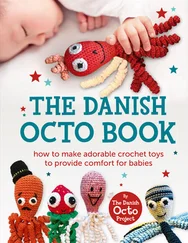how to read this book
In response to our “advisers” (sleepless parents) we begin this book by giving you steps and tools to help your baby sleep so you can begin our sleep plan right away. But, nighttime parenting is not just a list of sleep tools, it’s a relationship with your baby. So, if you’re not too tired, you may want to read chapter 3 first. It will help you understand how babies sleep – or don’t! After you’ve read the first three chapters then you are ready to put all these sleep tools together into your baby’s individual sleep plan (ISP), which we show you how to do in chapter 4. The rest of the book takes you to a deeper understanding of all the sleep tools listed in the first four chapters. Promise you’ll read the whole book!
We could have just written a booklet in cookbook fashion with a catchy title such as Two Weeks to Sleeping through the Night – Twenty Tips. This has never been our way of writing. Parenting is too precious to be cheapened by such gimmicks. Instead, in this book we have taken our usual approach: giving you the tools to become your own expert in your baby and to help you work out your own style of nighttime parenting.
This is a book of options, not “should do’s”. There is no one-bed-fits-all approach to helping babies sleep. We will give you tools and help you select the ones which fit the sleep temperament of your child so that you can create an individual sleep plan. Helping your baby learn to sleep better is not like following a diet or exercise regimen. There’s a lot of give and take, and the options you choose to try will depend on your baby’s personality. Just as there are quiet and more active babies in the daytime, there are sound sleepers and frequent wakers during the night. Some high-strung babies are not fans of sleep in general and will need an extra set of tools to help them want to sleep longer.
This is also a book about options for different family lifestyles and different philosophies of nighttime parenting. Realistically, many parents juggle many different sleeping arrangements during the years their children are small. There are co-sleepers, cot sleepers, and families who play musical beds. One baby may start out as a cot sleeper and then upgrade to being a co-sleeper, and then back to a cot sleeper. There is no right arrangement for every family. The one that gets all family members the best night’s sleep is the right arrangement for your family. Yet, the key is to be open to trying various sleeping arrangements at various stages of your child’s development until you arrive at one that works for your family. The important thing is to keep working at it. Sleep is important. Higher quality sleep is associated with happier and healthier babies – and parents.
Nighttime parenting is a season of child rearing. Yes, your baby will eventually sleep through the night. Now, you may wonder how to get your infants down to sleep at night. In a few years, you’ll be wondering how to get them up in the morning. Remember, the nights of baby in your arms, at your breasts and in your bed is a very short while in the total life of your child. Yet the memories of your love and availability last a lifetime.
We wish you and your child years of restful sleep.
William, Robert and Martha Sears San Clemente, California February 2005
Конец ознакомительного фрагмента.
Текст предоставлен ООО «ЛитРес».
Прочитайте эту книгу целиком, купив полную легальную версию на ЛитРес.
Безопасно оплатить книгу можно банковской картой Visa, MasterCard, Maestro, со счета мобильного телефона, с платежного терминала, в салоне МТС или Связной, через PayPal, WebMoney, Яндекс.Деньги, QIWI Кошелек, бонусными картами или другим удобным Вам способом.












